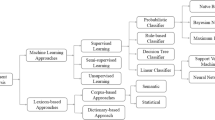Abstract
Watching a movie for three minutes has become a popular term in contemporary life, and people also hope to spend less time understanding the emotional direction and general plot of long novels. Currently, research on emotional analysis in novels mainly focuses on foreign languages. This article introduces Graph Convolutional Neural networks into the text emotion classification of novels. Text GCN is used to conduct emotion analysis on Ba Jin’s novel “The Rapids Trilogy”, and iStoryline is used to visualize the storyline of literary works. Visual coding adjustments are made based on the results of emotion analysis in the generated storyline, where line aggregation and dispersion represent whether the characters appear in the same scene, The brighter the color of the lines, the more positive the emotions, making the visualization more vivid, full, and beautiful. The experimental results indicate that this method enables readers to easily grasp the overall direction of the novel’s plot and have a clearer understanding of the emotional changes of the characters. In addition, the accuracy of the Text GCN model is superior to traditional sentiment classification methods on Chinese datasets. This method provides a new approach for emotional analysis and narrative visualization research in literary works, and can be extended to other fields of digital entertainment.
Access this chapter
Tax calculation will be finalised at checkout
Purchases are for personal use only
Similar content being viewed by others
References
Yuqing, L., Xin, L., et al.: A bilingual dictionary based method for analyzing multiple types of emotions on Weibo. J. Electron. Sci. 44(09), 2068–2073 (2016)
Cai, Y., Yang, K., Huang, D., et al.: A hybrid model for opinion mining based on domain sentiment dictionary. Int. J. Mach. Learn. Cybern. 10(8), 2131–2142 (2019)
Yanyan, Z., Bing, Q., et al.: Construction of a large-scale emotion dictionary and its application in emotion classification. Chin. J. Inf. Technol. 31(02), 187–193 (2017)
Jiang, F., Liu, Y.Q., Luan, H.B., et al.: Microblog sentiment analysis with emoticon space model. J. Comput. Sci. Technol. 30(5), 1120–1129 (2015)
Jelodar, H., Wang, Y., Orji, R., et al.: Deep sentiment classification and topic discovery on novel coronavirus or COVID-19 online discussions: NLP using LSTM recurrent neural network approach. IEEE J. Biomed. Health Inform. 24(10), 2733–2742 (2020)
Kipf, T.N., Welling, M.: Semi-supervised classification with graph convolutional networks. arXiv preprint arXiv:1609.02907 (2016)
Bastings, J., Titov, .I, Aziz, W., et al. Graph convolutional encoders for syntax-aware neural machine translation. arXiv preprint arXiv:1704.04675 (2017)
Beck, D., Haffari, G., Cohn, T.: Graph-to-sequence learning using gated graph neural networks. arXiv preprint arXiv:1806.09835 (2018)
Nguyen, T., Grishman, R.: Graph convolutional networks with argument-aware pooling for event detection. In: 32nd Proceedings of the AAAI Conference on Artificial Intelligence (2018)
Yao, L., Mao, C., Luo, Y.: Graph convolutional networks for text classification. Proc. AAAI Conf. Artif. Intell. 33(01), 7370–7377 (2019)
Chen, W., Lao, T., Xia, J., et al.: Gameflow: narrative visualization of NBA basketball games. IEEE Trans. Multimedia 18(11), 2247–2256 (2016)
Shi, Y., Bryan, C., Bhamidipati, S., et al.: MeetingVis: visual narratives to assist in recalling meeting context and content. IEEE Trans. Vis. Comput. Graph. 24(6), 1918–1929 (2018)
Tang, T., Rubab, S., Lai, J., et al.: IStoryline: Effective convergence to hand-drawn storylines. IEEE Trans. Vis. Comput. Graph. 25(1), 769–778 (2018)
Tang, T., Li, R., Wu, X., et al.: Plotthread: Creating expressive storyline visualizations using reinforcement learning. IEEE Trans. Vis. Comput. Graph. 27(2), 294–303 (2020)
Reagan, A.J., Mitchell, L., Kiley, D., et al.: The emotional arcs of stories are dominated by six basic shapes. EPJ Data Sci. 5(1), 1–12 (2016)
Ruan, W., Jun, D.: Exploring the Construction and Visualization, Emotionalization, and Scenarioization of Storylines: Taking “Zhang Xueliang’s Oral History” as an Example. Library and Information Work (2022)
Author information
Authors and Affiliations
Corresponding author
Editor information
Editors and Affiliations
Rights and permissions
Copyright information
© 2023 The Author(s), under exclusive license to Springer Nature Switzerland AG
About this paper
Cite this paper
Zhuo, S., Meng, W., Wei, C., Xiaonan, L. (2023). Research on Emotional Classification and Literary Narrative Visualization Based on Graph Convolutional Neural Network. In: Lu, H., et al. Image and Graphics . ICIG 2023. Lecture Notes in Computer Science, vol 14357. Springer, Cham. https://doi.org/10.1007/978-3-031-46311-2_22
Download citation
DOI: https://doi.org/10.1007/978-3-031-46311-2_22
Published:
Publisher Name: Springer, Cham
Print ISBN: 978-3-031-46310-5
Online ISBN: 978-3-031-46311-2
eBook Packages: Computer ScienceComputer Science (R0)




